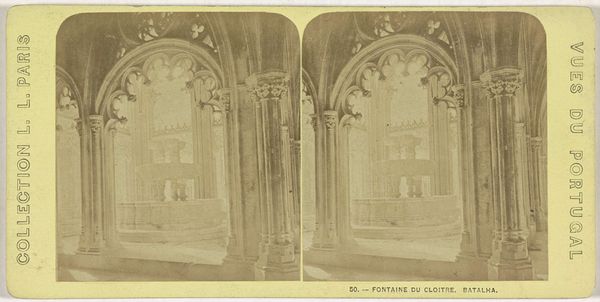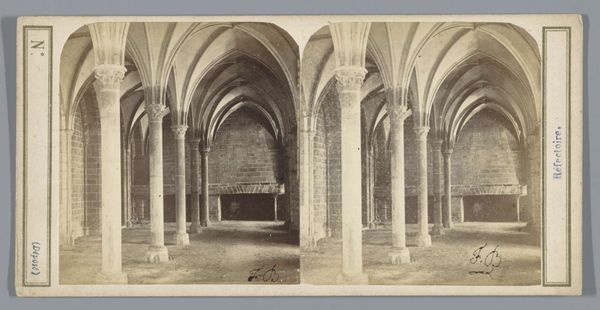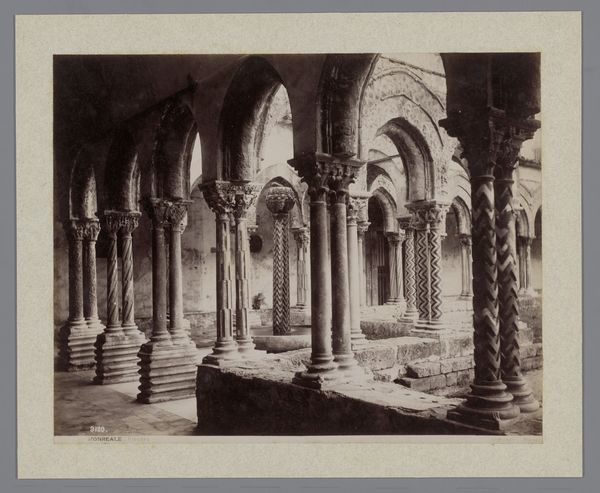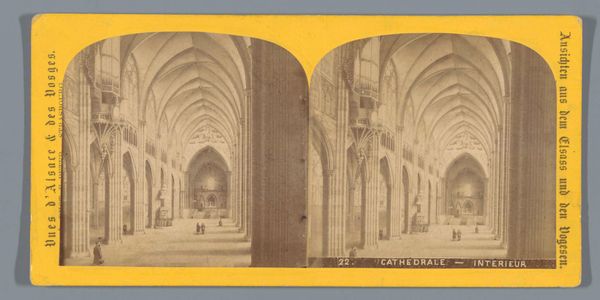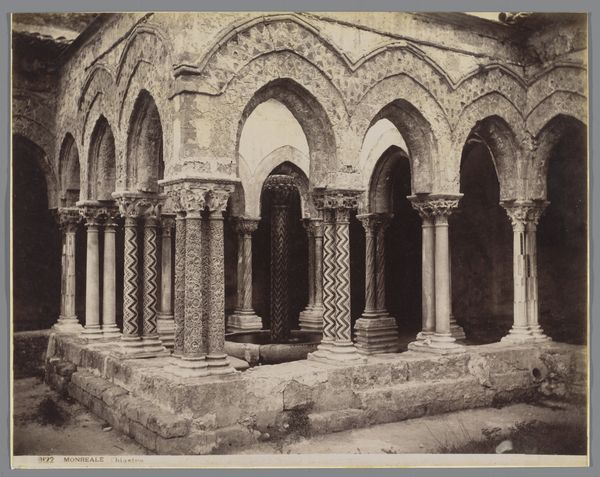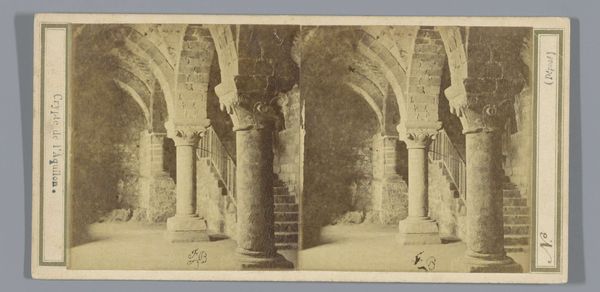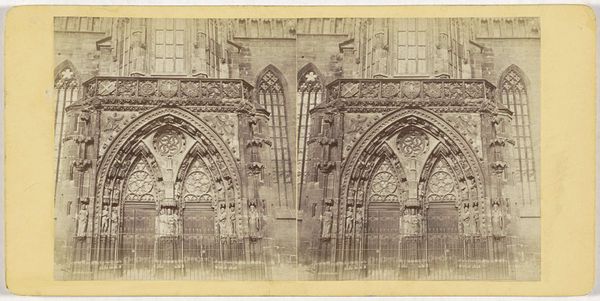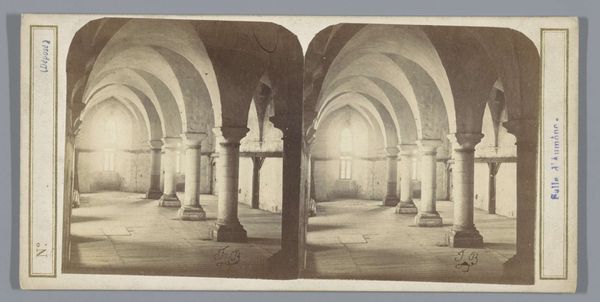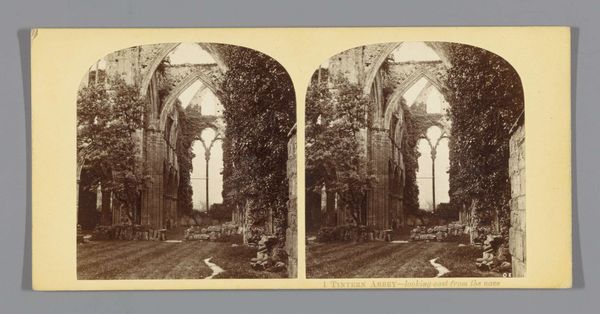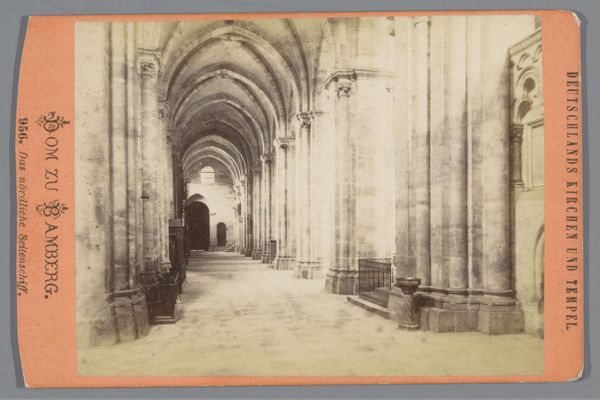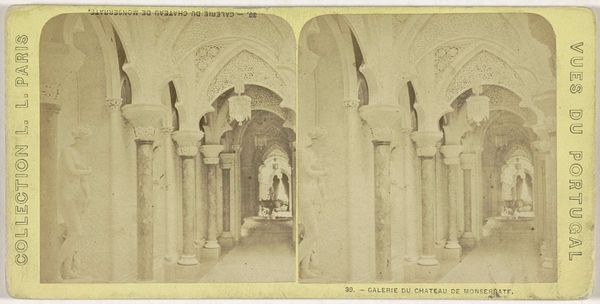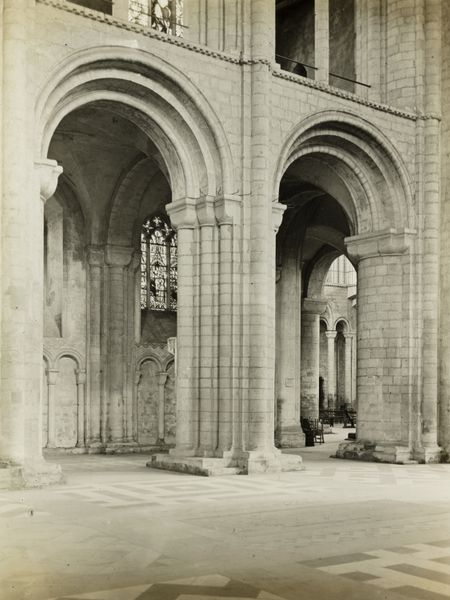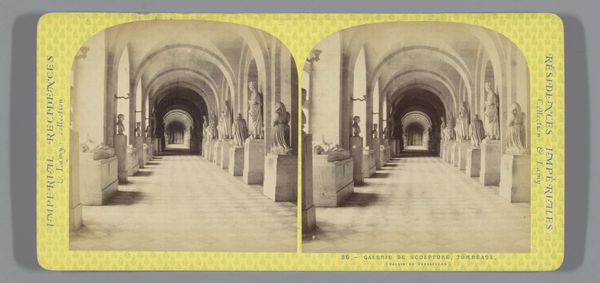
Bron in het Hiëronymietenklooster of Mosteiro dos Jerónimos in Belém, Lissabon 1868 - 1890
0:00
0:00
photography, collotype
#
landscape
#
etching
#
photography
#
romanesque
#
collotype
#
cityscape
Dimensions: height 85 mm, width 173 mm
Copyright: Rijks Museum: Open Domain
Curator: This stereoscopic collotype presents the fountain within the cloister of the Jerónimos Monastery in Belém, Lisbon, dating between 1868 and 1890. It gives an ethereal, almost haunting view. Editor: It does. I'm struck by the muted tones; the details of the stonework are somewhat lost in the reproduction, lending the scene a dreamlike, removed quality. I wonder about the production; how does this photographic print affect the architectural space it depicts? Curator: Precisely. In the latter half of the 19th century, architectural photography like this played a critical role in shaping European understanding of its historical identity. The image’s wide circulation bolstered Portugal's image as a nation defined by its rich heritage. This was vital amid complex political landscapes. Editor: It's fascinating to consider this as a commodity, designed to project a particular national image. Looking at the cloister, the focus on craftsmanship - each stone meticulously shaped by skilled labor - stands in stark contrast to the mass-produced nature of collotype printing. I'd like to see how those hands transformed raw material. Curator: A good point. There’s an implicit tension here. This very modern reproduction technique puts the medieval era on display for a burgeoning tourist market. That fountain became a signifier; Portugal sold off relics like this while aiming for industrial and political ascendancy. Editor: It's intriguing to imagine people holding this stereo card, peering into the past as if it was in the palm of their hands. This monastery, then, and even now is less of a site of spirituality than a carefully presented product. Curator: Indeed, an artifact that participates in a visual dialogue defining cultural status and canonizing it through institutional power. The careful staging in this shot becomes incredibly significant. Editor: Seeing it this way provides valuable nuance on our concepts of cultural relics. It’s been a very thought-provoking exchange. Curator: Agreed. Understanding how these images functioned then offers invaluable insight on the continuing relevance of architecture in today’s cultural heritage.
Comments
No comments
Be the first to comment and join the conversation on the ultimate creative platform.
